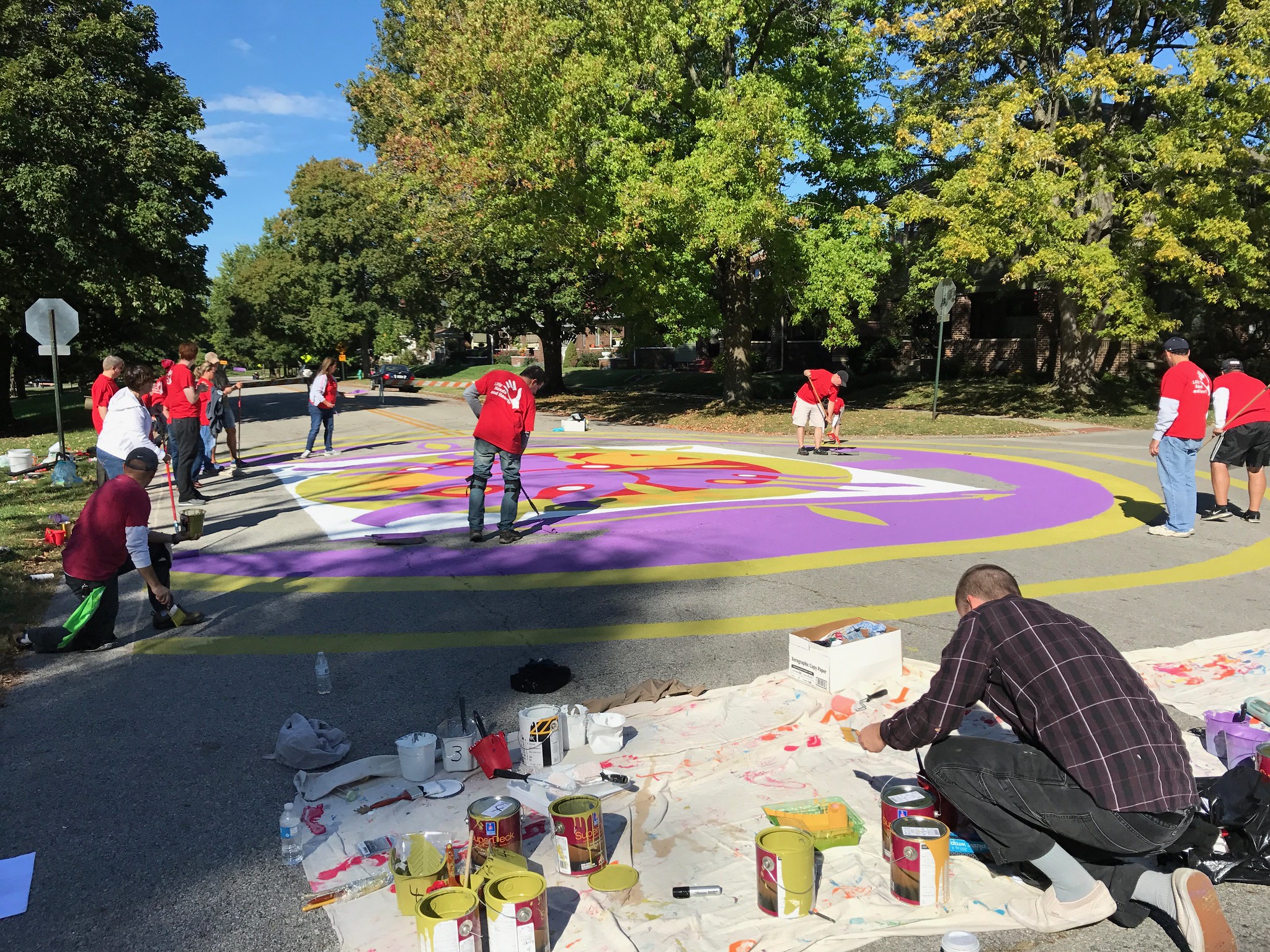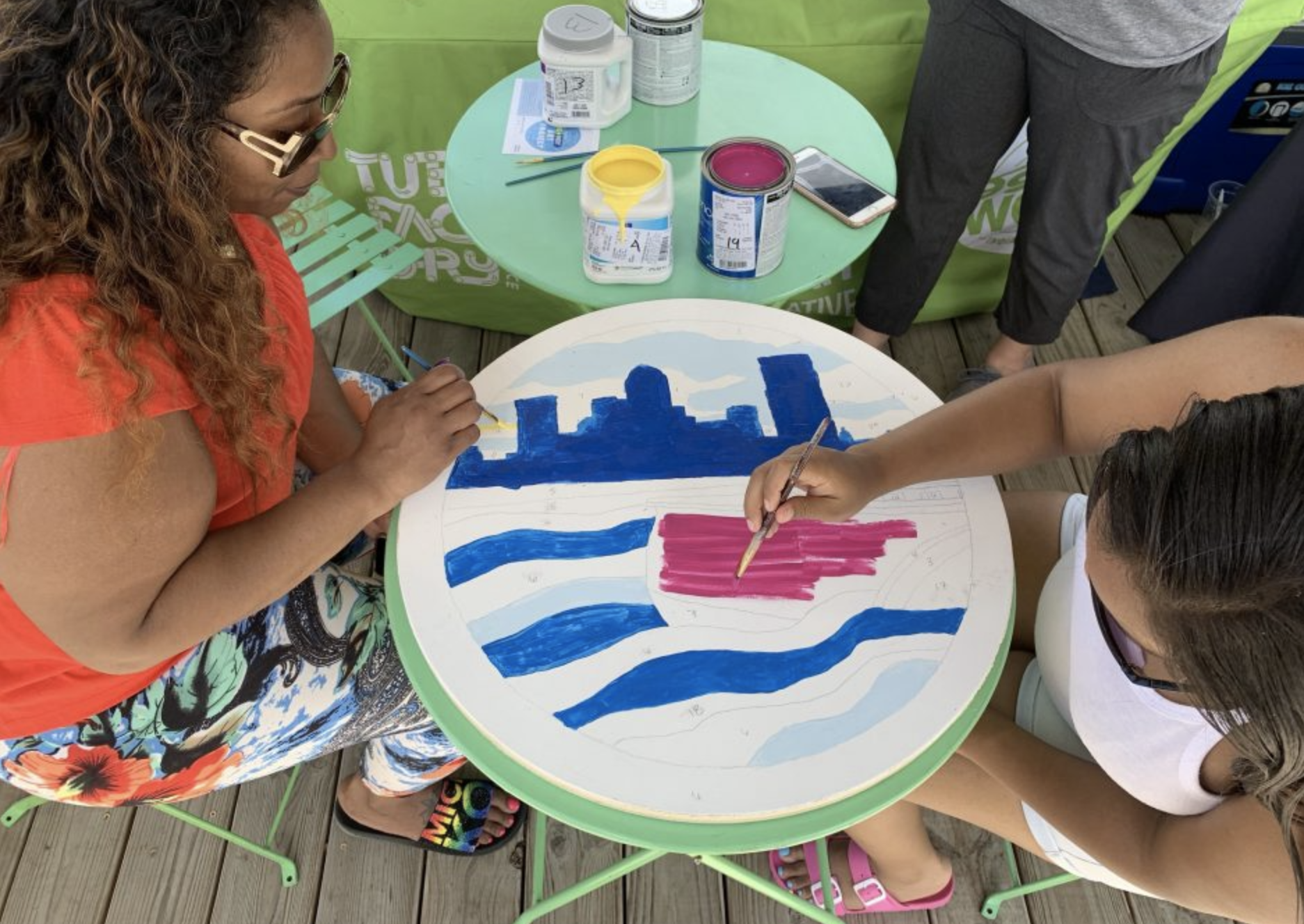Big Car Collaborative, a nonprofit arts organization based on the near southside of Indianapolis, uses tools of culture and creativity to build community and connect people as a way to boost the quality of life. Big Car focuses on commissioned contemporary art exhibitions, public art, and place-based events. The organization works to draw together people of all backgrounds to promote and perpetuate creativity, invigorate public places, and support neighborhoods, with an emphasis on the .

Big Car operates from its home base at Tube Factory artspace, a contemporary art museum doubling as a community space. Tube Factory is part of a campus of 15 buildings Big Car owns or co-owns on one mixed-use block. These include Listen Hear, a sound art space and home of FM broadcast radio station 99.1 WQRT; seven formerly vacant houses serving as homes for artists, five houses sold as long-term affordable artist residences; a sculpture garden in three merged former backyards; and another former vacant factory, offering studios, performance and event space, and a culinary incubator.
Big Car, which serves as the host organization for the South Indianapolis Quality of Life Plan organization, is part of an ongoing inclusive and equitable approach to addressing decades of disinvestment.

A group of writers, musicians, and artists founded Big Car in 2003 while sharing a studio in the neighborhood just north of . Big Car officially became a nonprofit in 2004 and operated out of the with monthly exhibits for seven years. Big Car was part of the development of the First Friday gallery tour and the first to open monthly for First Fridays in Fountain Square.
In 2006, the organization moved projects into public spaces in the neighborhood and locations like the Central Library and the . In 2009, Big Car received its first large grant for projects that brought art to people in eight neighborhoods. During this work, Big Car staff artists discovered a vacant tire shop in front of Lafayette Square Mall. For three years, the group transformed this place with a parking lot, garden and arts space, and immigrant-focused programs.

In 2015, Big Car brought three months of public programming to . This collaboration with the City. which tested plans for infrastructure redesign, led to further placemaking work at the , the , and other locations around Indiana. That same year, Big Car purchased Tube Factory, which opened in 2016.
Big Car has built an international reputation in contemporary art by working with notable artists from Indianapolis and around the world like Carl Pope, Carlos Rolón, Saya Woolfalk, Jesse Sugarmann, LaShawnda Crowe Storm, , Pablo Helguera, Scott Hocking, and LaToya Ruby Frazier. The organization received coverage from publications like The Guardian, Washington Post, Sculpture Magazine, Hyperallergic, Vice News, Curbed, and Public Art Review. Additionally, Cara Courage’s case study featured Big Car in the Routledge book Arts in Place: The Arts, the Urban and Social Practice (2017). Big Car cofounders Jim Walker and Shauta Marsh wrote a chapter in the follow-up book, Creative Placemaking: Research, Theory, and Practice (2018).
FURTHER READING
- Big Car. “History.” https://www.bigcar.org/history/.
CITE THIS ENTRY
APA:
Walker, J. (2021). Big Car Collaborative. Encyclopedia of Indianapolis. Retrieved Dec 13, 2025, from https://indyencyclopedia.org/big-car-collaborative/.
MLA:
Walker, Jim. “Big Car Collaborative.” Encyclopedia of Indianapolis, 2021, https://indyencyclopedia.org/big-car-collaborative/. Accessed 13 Dec 2025.
Chicago:
Walker, Jim. “Big Car Collaborative.” Encyclopedia of Indianapolis, 2021. Accessed Dec 13, 2025. https://indyencyclopedia.org/big-car-collaborative/.

Help improve this entry
Contribute information, offer corrections, suggest images.
You can also recommend new entries related to this topic.